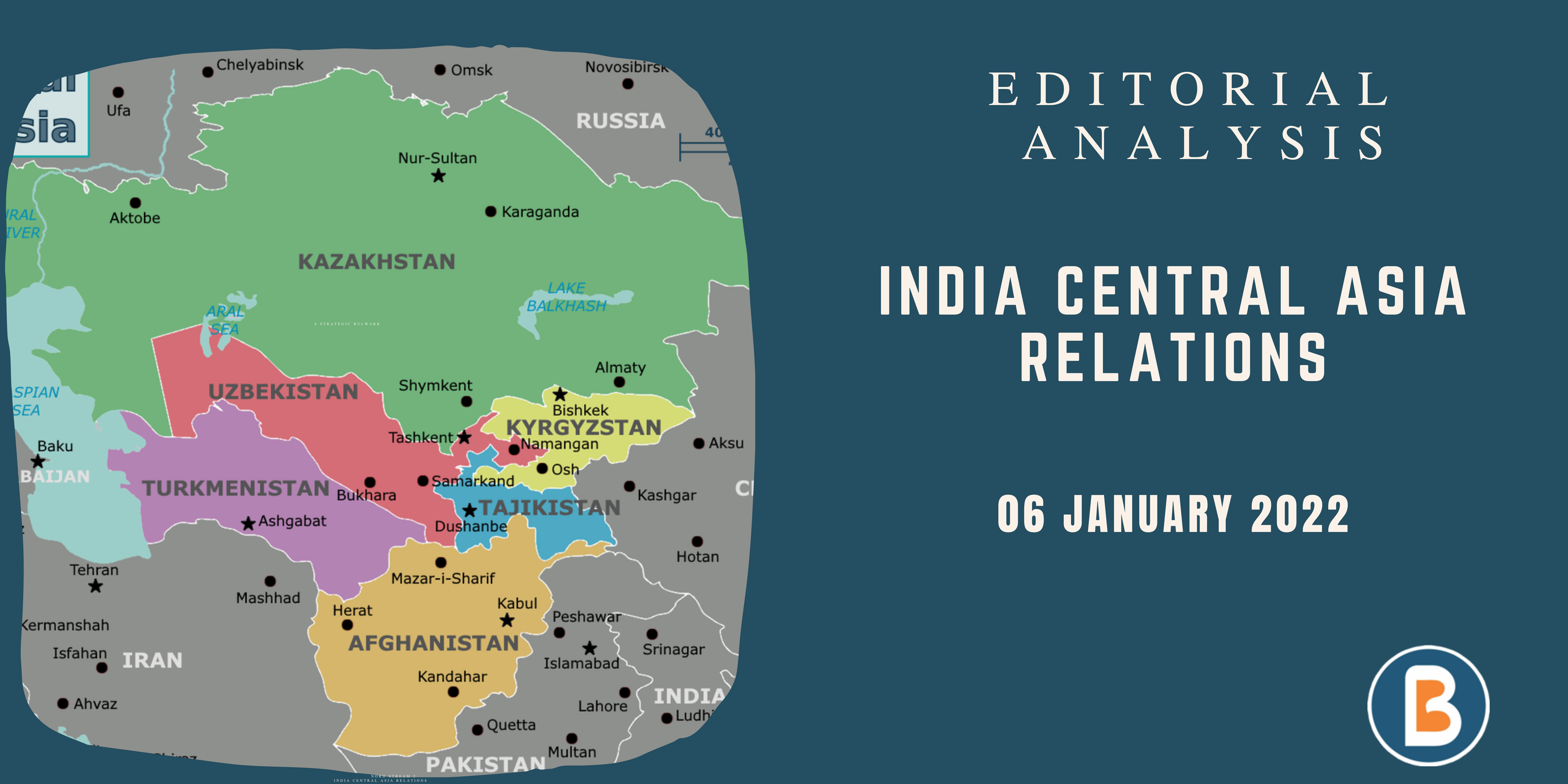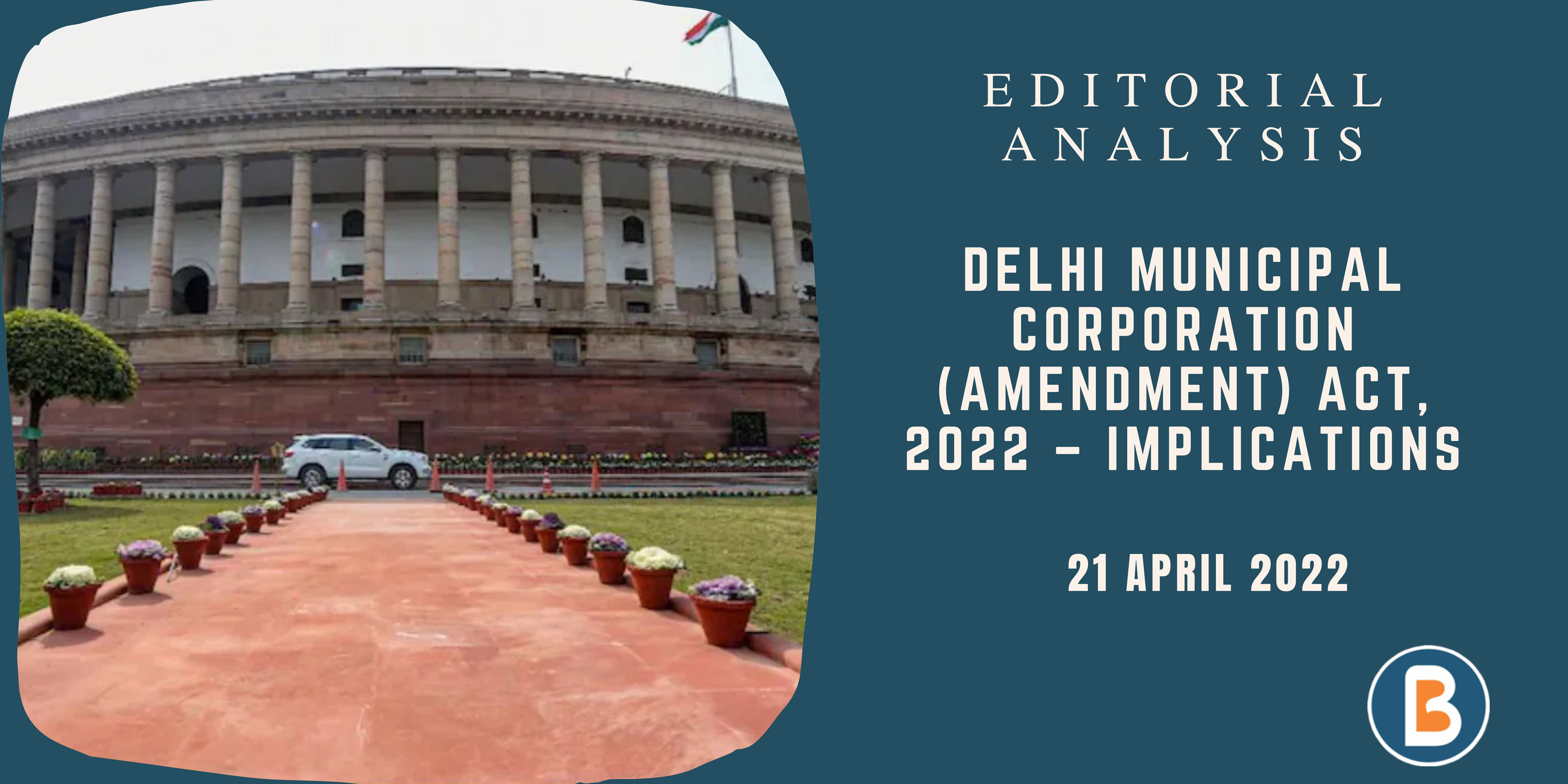- Posted on
- Editorials
Introduction:
- Afghanistan’s dramatic events have sparked new geostrategic and geoeconomic worries for the region.
- The changing environment has posed new problems for India’s regional and bilateral relations with Central Asia and the Caucasus, forcing the country to rethink its rules of engagement in the region.
Context:
- Earlier this month, the External Affairs Minister visited the region for the third time in four months.
- In Kyrgyzstan, the Minister of Foreign Affairs provided a $200 million credit line to support development projects and signed a Memorandum of Understanding (MoU) on High-Impact Community Development Projects (HICDP).
- India took aim at China’s Belt and Road Initiative at the Foreign Ministers’ Conference on Interaction and Confidence-Building Measures in Asia (CICA) (BRI).
- He criticized China’s efforts for promoting the BRI, saying that while more connectivity was necessary for regional stability, it should not be sought for personal gain.
- He also chastised Pakistan for assisting cross-border terrorism. External Affairs Minister met with counterparts from Russia, Uzbekistan, and Turkmenistan before arriving in Armenia to discuss regional cooperation.
Relationship between India and Central Asia:
- The relationship between India and Central Asia has a long history. In terms of people-to-people contact, trade, and commerce, the two regions have shared profound cultural ties over the previous two millennia.
- Parts of both regions were occupied by ancient kingdoms such as the Kushana Empire.
- From the 3rd century BC until the 15th century AD, these regions were connected by the Silk Road, until the maritime route from Europe to India was discovered.
- The Silk Route linked the two regions not only for the transit of goods such as silk and spices, but also for the interchange of ideas, religion, and philosophy.
- Buddhism spread from India through Central Asia and then to West China along this route.
- The historical and civilizational connections have influenced many aspects of life, including religion and culture.
- The arrival of Islam and later the formation of Muslim power in India, many of whose rulers had their origins in Central Asia, increased ties between the two countries during the medieval ages.
The Central Asia Region’s Importance:
Energy Safety:
- Central Asian countries are endowed with significant hydrocarbon deposits, natural gas, and oil reserves, making them an appealing investment destination.
- Kazakhstan is the world’s top uranium producer, with vast gas and oil reserves.
- Uzbekistan is also rich in gas and, together with Kyrgyzstan, is a major gold producer in the region.
- Tajikistan has vast hydroelectric potential, whereas Turkmenistan has the world’s fourth largest gas reserves.
Security in the Region:
- Terrorism, drug trafficking, and arms smuggling are all problems that must be addressed.
- Keeping an eye on the emergence of radical Islamist organisations that could represent a security concern to India.
Strategic Location:
- Central Asian countries are strategically located to serve as a link between different parts of Asia as well as Europe and Asia.
- Central Asia’s strategic location is a focal point for geopolitical maneuvering influencing India’s relations with Pakistan, China, the United States, Russia, and other regional powers.
Commercial relations:
- For Indian consumer goods, Central Asia is a relatively untapped market. The Indian tea and pharmaceutical sectors have established a presence in Central Asia.
- Central Asia’s rapid economic expansion has prompted a construction boom as well as the development of sectors such as IT and tourism.
The Evolution of India’s Relations with Central Asia:
- Following the disintegration of the Soviet Union and the establishment of autonomous Central Asian countries, India reestablished connections with the strategically important region.
- India aided the region financially and established diplomatic contacts.
- To boost defense cooperation and strengthen trade connections, India inked Strategic Partnership Agreements (SPA) with Kazakhstan, Tajikistan, and Uzbekistan.
- India’s ‘Connect Central Asia’ policy, launched in 2012, sought to strengthen India’s political, economic, historical, and cultural ties with the region.
- Pakistan’s refusal to allow India to enter through its borders, on the other hand, stymied India’s efforts. China took advantage of the situation by launching the much-anticipated Belt and Road Initiative (BRI) in Kazakhstan.
- The mounting geostrategic and security worries over the BRI’s China-Pakistan Economic Corridor (CPEC) and its violation of Indian sovereignty led New Delhi to rethink its sluggish approach.
- In 2015, India and Iran signed memorandums of understanding to develop the Chabahar port in Sistan-Baluchistan, which had been dormant since 2003.
- The majority of Central Asian governments see India’s Chabahar port as a way to expand their export markets while also limiting China’s ambitions.
- China’s strong stance has sparked societal unrest over the mistreatment of ethnic minorities in neighboring Xinjiang.
Relationships between India and Armenia in recent years:
- India’s External Affairs Minister is the first from the country to visit Armenia.
- To strengthen bilateral relations, the Minister and his Armenian counterpart agreed to increase trade and cultural exchanges.
- Mr. Jaishankar also supported efforts under the Organization for Security and Cooperation in Europe’s (OSCE) Minsk group to find a peaceful solution to the Nagorno-Karabakh conflict between Azerbaijan and Armenia during his visit.
- The Taliban’s re-establishment of power in Afghanistan has exposed the flaws of coalitions like the Shanghai Cooperation Organization (SCO), which was formed in response to terrorism threats emanating from Afghanistan.
- However, most member nations have utilized the SCO for their own regional geostrategic and security purposes, resulting in a trust deficit and divergence within the organization.
- Central Asian officials convened in Turkmenistan in August to express their worries about the Afghan situation and to debate the existence of Central Asian terror groups within Afghanistan and along their borders, after the SCO failed to respond collectively to the Afghan problem.
Conclusion:
- As they attempted to diversify their strategic connections, Central Asian countries were eager to have India as a partner.
- With India’s involvement in the region in the future years, regional dynamics in Central Asia will become quite fascinating.
- Rising anti-Chinese sentiment in the region, as well as Taliban security challenges, allow New Delhi and Central Asia to rethink their relationship.
- India can’t afford to waste any time recalibrating its regional commitments.
- India has been accepted into the Ashgabat Agreement, giving it access to connection networks that will facilitate trade and commercial relations with Central Asia and Eurasia, as well as access to the region’s natural resources.




